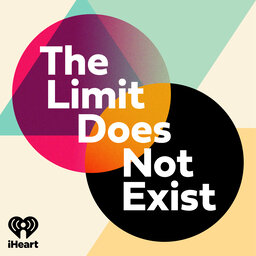A Pilgrim in Art and Science (Natalie Settles)
This week, Natalie Settles invites us on her pilgrimage through art and science and shares many insights along the way. Natalie is an award-winning artist and scientist whose work recasts the interdisciplinary relationship between evolutionary biology and Victorian design. Her ability to move between disciplines and make art in limited spaces has given Natalie a unique lens on the creative process, the health crisis, and transitions of all kinds. So pack your headphones, bring along your curiosity, and join us on this inspiring journey.
Learn more about your ad-choices at https://www.iheartpodcastnetwork.com
 The Limit Does Not Exist
The Limit Does Not Exist


